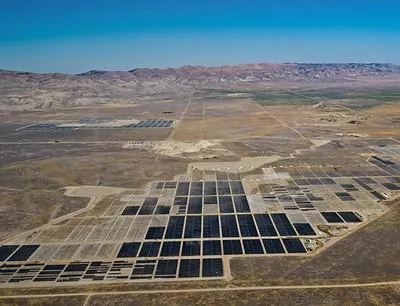The feat accomplished by the US Department of the Interior in the realm of renewable energy is nothing short of remarkable. They’ve managed to authorize over 25 gigawatts (GW) of clean energy developments, eclipsing their set target of 25 GW by 2025. This surge in clean energy capability means a brighter, more sustainable future for American homes, with the power to energize upwards of 12 million households nationwide.
Impressive Clean Energy Project Milestones
Federal approval for clean energy projects has not only hit targets but exceeded them. The grand total stands at nearly 29 GW—a staggering amount that depicts the nation’s strides towards a renewable energy-dominated landscape. This energy is harvested from a diverse array of sources including solar, wind, and geothermal. Additionally, the Department has leased new areas in Solar Energy Zones expected to contribute nearly 2.5 GW of clean energy.
The Bureau of Land Management (BLM) is vigorously pursuing further clean energy opportunities with 66 utility-scale initiatives that are poised to enrich the grid with over 32 GW of renewable energy, primarily across the western regions of the United States.
An online dashboard offers the public the opportunity to track these green projects systematically, while approximately 300 applications for solar and wind testing continue through the preliminary phases of review.
Operational Solar Farms and Future Outlook
Progress is tangible, with the energizing of the Arica and Victory Pass solar projects in California adding a significant 465 megawatts (MW) of clean electricity to the grid. This advancement ensures that over 10 GW of clean energy is now operational on public land, serving the electricity needs of over five million western homes.
The celebratory milestone of beating the clean energy permit goal ahead of time serves as a beacon of progress. Nevertheless, these achievements form only a part of the grander scheme involving the transportation and integration of this energy into homes and businesses across the nation. That transformative process demands robust transmission capability and grid enhancements.
Focused On Infrastructure and Grid Enhancement
The challenges are not trivial, with the World Resources Institute highlighting that current transmission projects constitute only about 10% of America’s infrastructural needs for transmission. Although it can take a decade to construct new power lines, emerging technologies aimed at augmenting existing lines could alleviate some pressure in the meantime.
Moreover, FERC‘s latest regulations aim to expedite grid connections and improve interconnection processes. One such step includes transitioning from a “first-come, first-served” model to a “first-ready, first-served” cluster study method, which should significantly reduce interconnection delays.
The Road Ahead for Clean Energy Implementation
There’s a consensus that while we are moving in the right direction, the pace at which this transformation is happening is not up to the mark according to the WRI. The transition to a grid fed predominantly by clean energy is a monumental task, but with the abundance of resources at our disposal, there is a clarion call to accelerate our efforts and light up our country with clean, renewable power much more swiftly than our current trajectory.

























